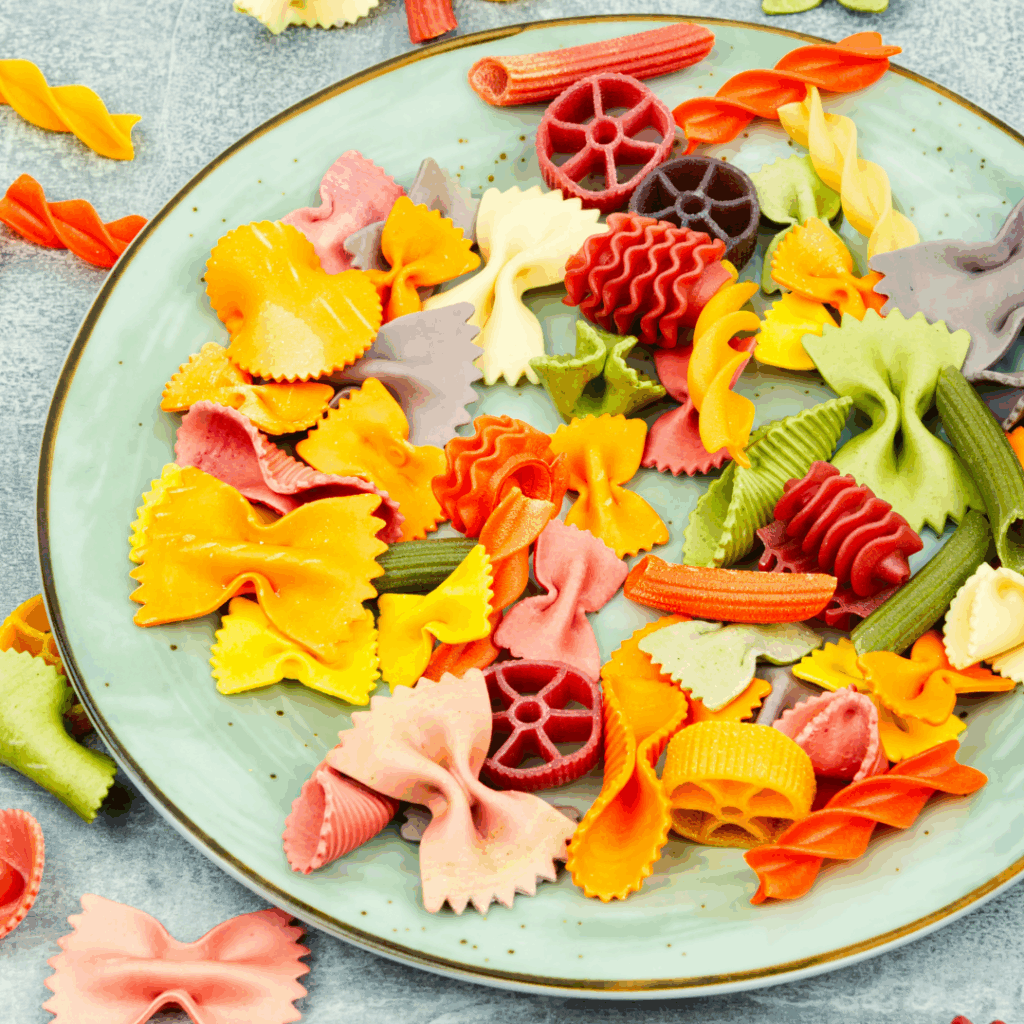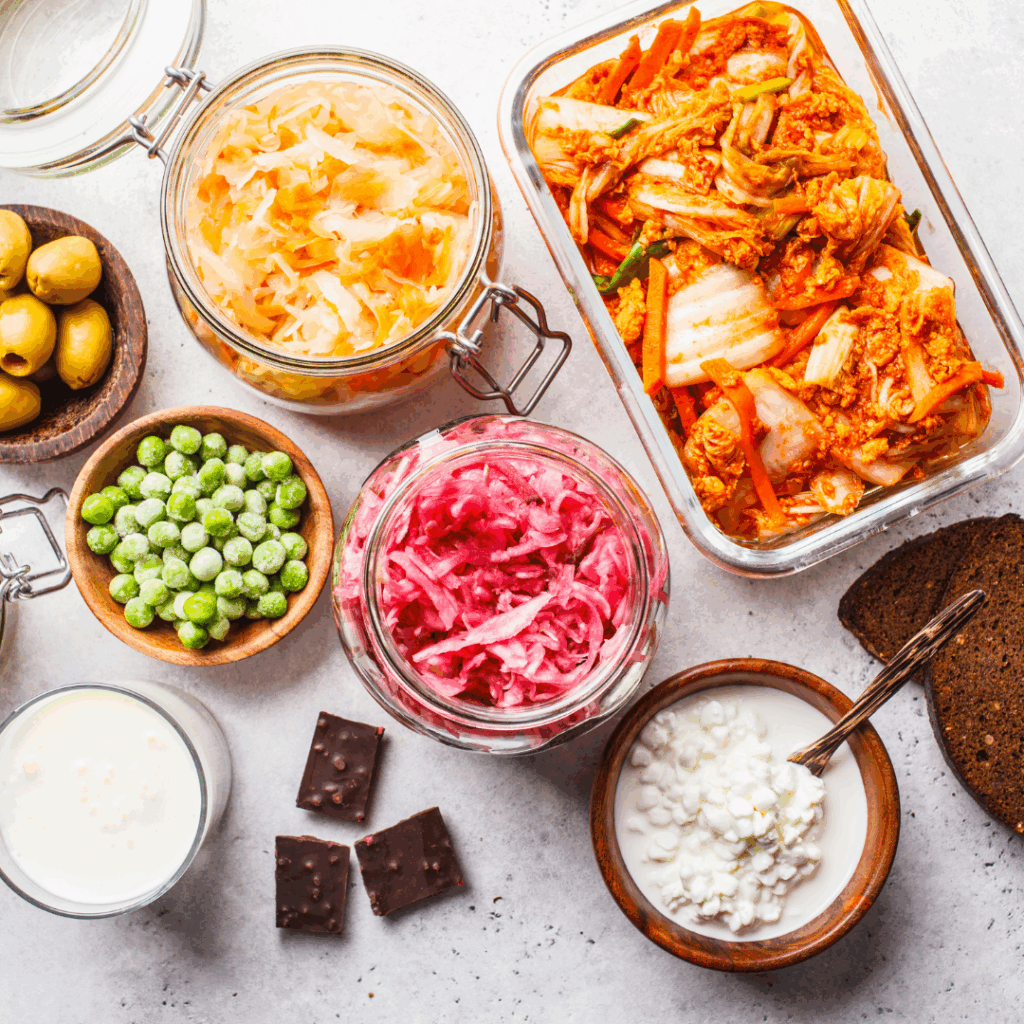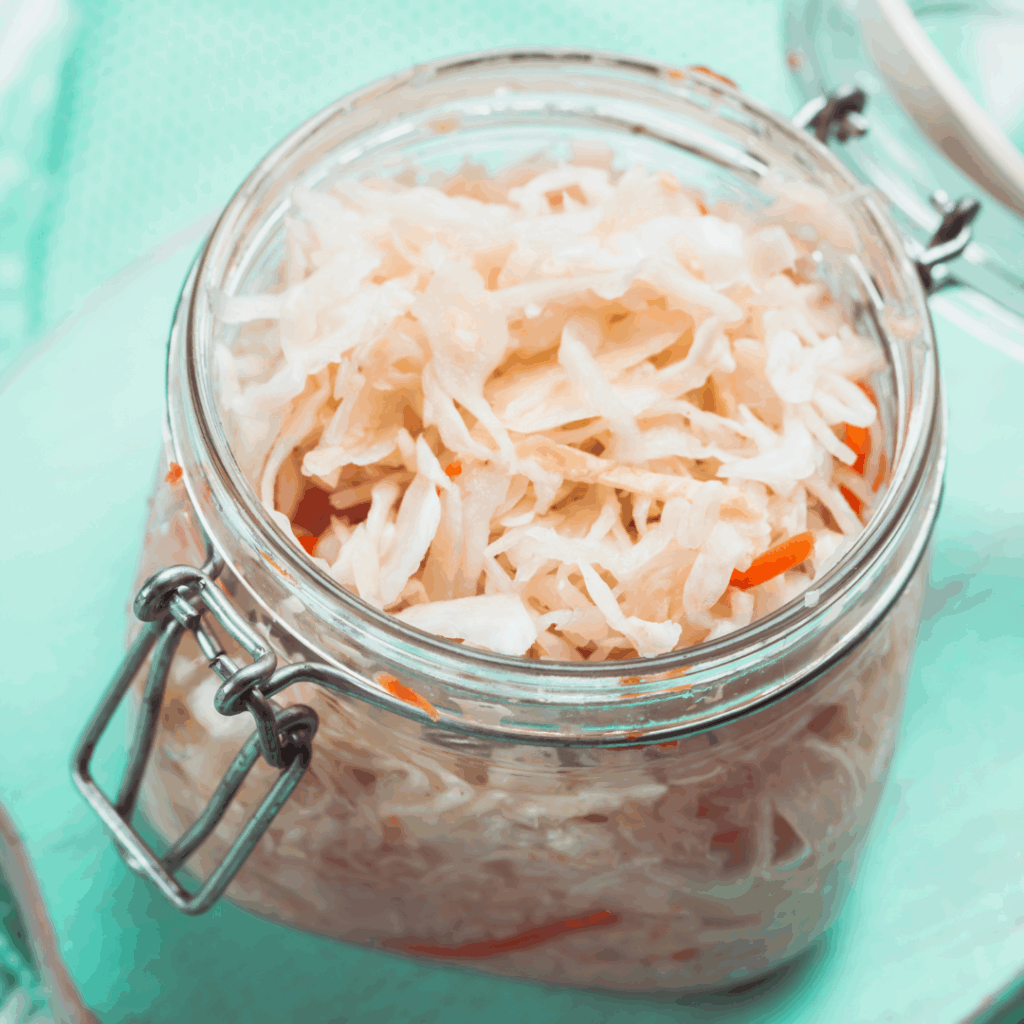Paying close attention to your baby’s bowel movements is just one of the many things you have to do as a parent.
Any changes to your baby’s diet, such as starting solids, can cause your baby’s poop to change – a lot. This may leave you with many unanswered questions about what’s normal, what’s not, and when to contact a healthcare professional.
Changes in color and frequency, or knowing how to recognize constipation in babies, are just a few of the things you need to learn about. Let’s go over everything you need to know about your baby’s poop once starting solids and what it can tell you about their health!

Table of Contents
Connection between poop & overall health
Since babies aren’t yet able to tell us how they’re feeling, we have to use certain indicators to collect information about their health and wellness – one of these is poop. We can use things such as the color, frequency, and texture of your baby’s poop to determine many different things.
Your baby’s poop can provide information about…
- Illness: Sometimes your baby’s poop can be the first, or only, indicator of an illness, such as a gastrointestinal bug.
- Nutrition: Certain colors can indicate issues with nutrient absorption, plus we can use the colors to tell us whether solid food is being swallowed.
- Hydration: Sometimes constipation can be a sign that more fluids are needed.
- Allergies or intolerances: There are certain signs to look out for that could indicate that your baby has an allergy or an intolerance to something they ate, and some of those signs show up in their diaper!

There is a wide variety of what is considered a normal bowel movement for babies after starting solids. Being informed can help you determine whether a change your baby is going through is to be expected or warrants a call to your baby’s doctor.
Poop changes to expect after starting solid foods
Until recently, your baby was on an all-liquid milk diet. Now they’re eating a variety of foods that are going to cause some expected changes to show up in their diaper (and maybe some unexpected ones too!).
Frequency
Every baby is different and will have their own schedule that is normal for them. That said, when introducing solids to your baby, you’re usually going to see the frequency of bowel movements go down.

This is because solids bulk the stool up and usually less fluid is taken in. It can be normal for it to take some time for a baby’s digestive system to adjust to this big change.
Normal frequencies can range from going a couple of times per day to a couple of times per week. What’s more important than frequency is the texture of the poop and whether your baby is happy or if they’re in discomfort.
Texture
When your baby starts solids their poop will become firmer. Now that we’ve added some foods to their once-all-liquid diet, your baby will be eating complex proteins, fiber, and other components that will start to bulk up their stool.
We want your baby’s poop to be a good consistency – not too hard but also not too soft. We don’t want your baby to be straining to poop or be in discomfort, which may indicate constipation.
Smell
Solid food produces a stronger odor!

Babies on a milk-only diet usually have milder-smelling bowel movements, especially exclusively breastfed babies. Once they start solids, get ready for smellier diapers!
Undigested food
You might notice bits of undigested food in your baby’s diaper after starting solids and panic thinking something’s wrong – but actually, it’s completely normal!
A newborn’s digestive tract is much shorter than an adult’s. Your baby’s digestive tract is still developing, maturing, and rapidly growing, almost tripling in size in the first year of life (1).
Therefore, the digestive tract might not always be breaking down all of the food that they’re eating before making it to the end. This is especially true for foods higher in fiber, such as corn, carrots, and blueberries because they don’t break down as easily.

Parents have even asked us if it’s normal to see the stringy parts of bananas in their baby’s bowel movements. That’s also a yes! Bananas have these tiny black threads through them that often come out in the stool. This is just the middle part of the banana that has not been digested.
This can also happen if your baby isn’t chewing their food thoroughly before swallowing, which is to be expected when they’re first starting with solid foods. If they’re not chewing food like older children or adults do, the digestive tract may not be able to break down the fibrous food.
On the bright side, it’s a great indicator that they’ve actually ingested something!
Color
Before starting solids, your baby’s poop color was likely fairly consistent. A mustard color for exclusively breastfed babies, and a brownish or yellow-brown color for formula-fed babies.

Once your baby starts eating a variety of solid food, you’ll notice a broader variation in baby poop color. It may even take on the color of the latest food they ate! Let’s dive into some examples below.
Normal baby poop colors after starting solids
Brown
This is kind of the standard color and happens naturally when babies begin eating solids. A healthy baby’s poop can range from yellow to brown.

Dark green
This is common when your baby eats food that is green in color like spinach or peas. This can also happen if your baby takes an iron supplement or eats a lot of iron-rich foods (as is recommended for babies).
Blue
This sounds concerning but is just a result of eating foods this color. One main culprit for producing this color of poop is blueberries!
Orange
Again, this could be from eating foods this color, such as carrots.

Red
You may notice a deep red or purple color if your baby ate something of that color recently. Beets are usually the main culprit.
Keep reading to understand when red isn’t normal.
Black
Black-colored poop could be due to some medications, iron supplementation, or eating high-iron foods. Iron supplements can cause poop to appear black, although it’s actually a dark green color. Darker-colored foods such as blackberries may also cause your baby’s poop to appear black.
We want to be very cautious if your baby’s bowel movement appears black as this may indicate a medical emergency. Keep reading to find out when you should be concerned about black-colored poop.
Abnormal baby poop colors once starting solids
While there are many normal baby poop colors, some colors can indicate health issues. Recognizing what isn’t normal can help you to act swiftly in case of a medical emergency.

Red
Generally, we don’t want to see red in your baby’s diaper as this indicates bleeding of some sort somewhere along the digestive tract (2). Bright red blood in the diaper typically indicates bleeding somewhere closer to the end of the tract (2).
This could be from an infection, an anal fissure from excessive pushing due to constipation, a milk allergy, polyps, or a blood vessel malformation (2). Flecks of red can also appear in a breastfed baby’s diaper if their mom has cracked, bleeding nipples. As mentioned above, it can also happen after your baby eats certain red-colored foods.
If the blood is due to an infection, your baby may also be showing other signs of illness including fever, irritability, vomiting, etc.

We really want to err on the side of caution with red poop. If you cannot say with 100% certainty that your baby’s poop has a red tinge due to eating lots of beets (for example), it’s best to call their doctor and discuss it. They may have you wait to see if the next poop is the same color, or they may want to check it out right away.
Black
While all babies will have a black poop called myconium as their first newborn poop, your baby should not have black poop again after the first few days of life (2).
Dark red or black poops indicate a very serious problem, specifically internal bleeding, as this is digested blood (2). If your baby has a black tarry-like poop, this could indicate a serious gastrointestinal bleed and you should seek medical attention immediately (2).
If their poop is at all borderline, as in you’re having a difficult time deciding if it’s red/black from eating beets, a dark green/black from iron supplements, or a dark red/black color from blood, it’s best to get your baby checked out, just in case.
White, pale yellow, or light gray
When a baby’s poop is white, gray, or pale yellow with perhaps a chalky texture, it can indicate a very serious, life-threatening medical condition with your baby’s liver (3).

Although rare, this color of stool can occur if there’s a blockage preventing bile from leaving the liver (3). This can cause the nutrients from food to not be properly digested and absorbed.
Bile is green which is what imparts the yellow, brown, or green color to normal baby poop. The most common cause of white-colored poop is a condition called biliary atresia (3). Early diagnosis is crucial in this case.
If your baby’s poop is white, light gray, or pale yellow, seek medical attention immediately.
3 Common digestive issues after starting solids
1. Constipation
Before starting solids, babies are less likely to become constipated because their diet is 100% liquid. Once they show all of the developmental signs of readiness at around 6 months of age and start eating solid food, you might see acute constipation as their body adjusts to different foods being introduced. This can result in a natural reduction in dirty diapers.
As their fluid intake from breast milk or formula decreases over time as they consistently eat more solid foods, you may notice a period of constipation.

It’s important to note that constipation is not simply a reduction in the amount of dirty diapers.
The more important factors for determining if your baby is constipated is if they have…
- Extremely hard and difficult to pass poop
- Poop that appears pebble-like and is in small pellets or marbles
- Pain and discomfort when pooping (4)
Important Note
Important Note
A red face while pooping is not a sign of constipation in young infants. They simply haven’t learned how to activate the correct muscles to push their poop out.
Most babies have this happen and as they get closer to 1 year of age, many parents notice this doesn’t happen as often anymore, if at all.
Causes
A baby may be constipated due to dehydration, not eating enough of the right types of fiber, or if they have an imbalance in their gut bacteria.

Treatment
Some of the best foods to help relieve constipation after starting solid foods are:
- Fruits, especially the “P” fruits – pears, prunes, and plums
- Vegetables, especially sweet potatoes, beets, broccoli, and carrots
- Beans and lentils
- Whole grains
- Avocado
- Seeds (ground chia seeds and ground flax seeds)
A note on prune juice for babies: We recommend avoiding giving fruit juice to your baby until at least 1-2 years of age because it’s a form of added sugar. There are sometimes exceptions to this, such as offering diluted prune juice (in a cup only) to help with constipation. However, this should only be done as directed by a medical professional and under their supervision.
Instead of prune juice, you can offer whole prunes to your baby as long as they are safely prepared. To modify prunes for your baby, remove the pit and rehydrate the dried prunes in hot water until soft. You can serve them to your baby finely chopped, mashed, or pureed, and offer them as is or mixed into a binder such as oatmeal, yogurt, or applesauce.

Other methods that can relieve constipation include (4,5):
- A gentle baby massage on their tummy
- Moving your baby’s legs in the motion of riding a bike while they’re lying on their back
- Or a warm bath which can relax their muscles and help to get their bowels moving
Learn more about our strategies for managing constipation.
Contact a healthcare professional right away if your baby is constipated and (4):
- Throws up or has a fever
- Has a swollen belly
- Won’t eat and seems unusually tired and fussy
2. Diarrhea
Diarrhea often accompanies an illness and usually resolves over time, but there are some things we want to watch for in babies.
With diarrhea, the key changes you’ll see in your baby’s stools are…
- Change in consistency (watery, loose, and possibly mucusy).
- Increase in the frequency (3 or more of these watery, loose stools in a row) (6).

Causes
Causes of diarrhea in babies include:
- An infection from a virus (this is the most common cause).
- Bacteria (you may also see streaks of blood in your baby’s stool in this case).
- Antibiotics can cause mild diarrhea. It’s important to note that diarrhea in response to antibiotics is not an allergic reaction (6).
- A cow’s milk allergy or lactose intolerance (6).
Treatment
If your baby is experiencing diarrhea, it’s not necessarily an emergency. Your main goal is to keep them hydrated! Dehydration is a serious complication of diarrhea and can happen quickly in infants (6).
You need to ensure that they’re drinking enough breast milk or formula. Once your baby is showing all of the developmental signs of readiness to start solid foods, you can try to serve foods with a high water content as well. Some good options are watermelon or cucumbers. It’s also important to encourage them to drink water from an open cup with meals.
If your baby is also experiencing fever, irritability, or appears to be in pain – seek medical attention right away. As mentioned, babies can dehydrate much faster than adults do, so it’s best to get them seen at the onset of these symptoms.

The signs of dehydration that you should be looking for, particularly if the diarrhea is ongoing and lasts for several days, are (6):
- Decreased tears or crying without tears
- Decreased urine and dark yellow colored urine
- Lack of saliva
- Sunken eyes
- Sunken fontanel (soft spot on your baby’s head)
- Excessive fatigue
- Less playful than usual
- Fussiness
If diarrhea is recurring, it can be a sign of a food allergy or sensitivity – most likely cow’s milk allergy or lactose intolerance. Be sure to speak with your baby’s doctor if you suspect either of these are the culprit.
With a cow’s milk allergy, your baby may have loose, slimy stools and you may also see blood streaks in the stool. With lactose intolerance, in addition to diarrhea, your baby may also experience gas and bloating since the gut cannot absorb the sugar (lactose) in milk (6). This is therefore converted to gas by the bacteria in the gut (6).
3. Gas and bloating
Introducing solids to your baby when they’ve been on a full-liquid diet up until this point can be a bit of a surprise to your baby’s digestive system. Therefore, it’s not uncommon for babies starting solids to have a bit of tummy upset or gas.

This all depends on the type of food being introduced. Some foods can have a bigger impact, can cause more gas production, and can be more difficult to digest.
It’s important to monitor your baby’s mood as well. If your baby seems to have an increase in gassiness when starting solids but is otherwise happy and playful, there’s no reason to make any changes.
However, if after a meal you notice your baby has increased gassiness and bloating, and seems to be in discomfort or is unsettled, you may want to adjust their diet.
If you notice certain foods are the culprit, that doesn’t mean you have to completely avoid offering them to your baby! We still want them to be offered a variety of foods to provide multiple exposures to them and ensure they get enough practice with all textures.
Instead, you can offer the foods in smaller quantities to see if that helps, and avoid serving them at dinner time to prevent sleep disruptions overnight. It might take time for your baby’s digestive system to adjust to certain foods!
Important Note
Important Note
If your baby is experiencing discomfort, an upset tummy, vomiting, or physical pain after new foods are introduced, you could potentially be dealing with food allergies or sensitivities.
In this case, you should avoid serving that food for the time being and contact your family doctor or pediatrician to determine the root cause of the issue.
Certain foods can cause more gassiness than others, here are some examples (7):
- Beans
- Broccoli
- Brussel sprouts
- Cauliflower
- Onions
- Carrots
- Green peppers
- Cucumbers
- Apples
- Bananas
- Whole grains
- Milk

When should I be concerned about my baby’s poop?
Here’s the thing, poop frequency is going to vary with each baby and the color will vary based on diet. The key to remember is that their poop should be soft, and your baby should be gaining weight and eating well.
That being said, there are certain changes that may occur that will warrant a check-in with your pediatrician right away – we’ve already mentioned a few so let’s review.

Red, black, pale yellow, grey, or white poop
This can be an indication that something serious is going on in your baby’s body.
See above for more information on these colors and what they may mean for your baby’s health.
Mucus
Although some mucus in your baby’s poop can be normal with a healthy, working digestive system, it can also indicate something else is going on.
Some reasons why your baby might have mucus in their poop include (8):
- Food allergies
- Illness caused by a virus (you may also see diarrhea in this case)
- Excessive saliva from your baby’s teething
- Malabsorption
You’ll want to check with your baby’s healthcare provider if the mucus lasts for two or more days, your baby seems to be in pain or discomfort, you’re unsure of what caused it, there are other symptoms along with the mucus, or there’s visible blood in the poop (8).

Dramatic changes after introducing solids
If you notice any drastic changes after introducing solids to your baby including changes in consistency, frequency, or pain, speak with your baby’s pediatrician. This can indicate a possible food allergy and should be addressed before offering that food again.
Runny or liquid poops at 1 year of age
If your baby’s poops continue to be runny and liquid-like leading up to their first birthday (but not diarrhea), be sure to discuss this with your baby’s pediatrician. By this age, their diet should consist mainly of solid foods, and therefore, their poops should reflect this and should have a thicker consistency than when they were on a liquid diet of breast milk or formula.
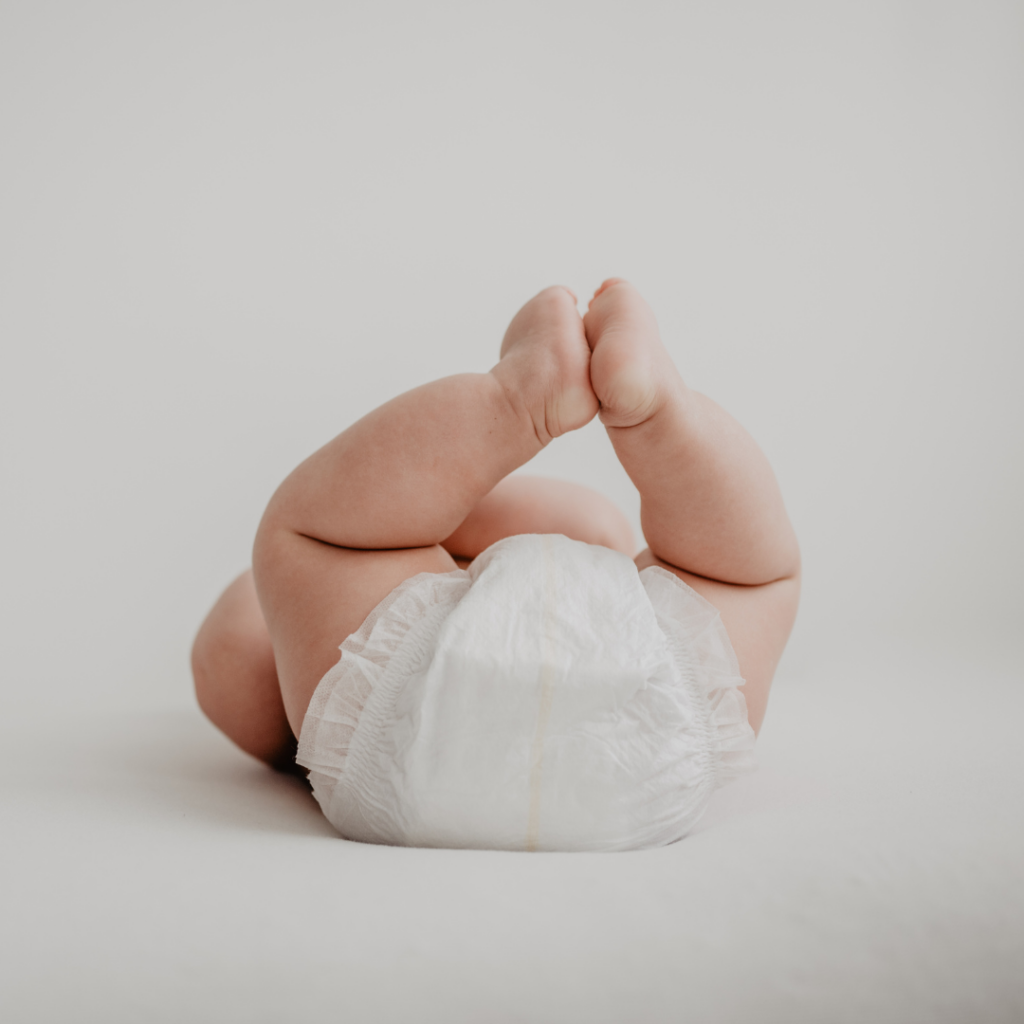
FAQs
Is it normal for babies to poop after every solid meal?
Yes, that can be normal! Baby poop varies so much, and each baby has a unique schedule that’s normal for them.
Plus, infants have something called the gastrocolic reflex (8). When a baby’s stomach stretches from food, the gastrocolic reflex signals the colon to empty quickly so that there’s room for more. This reflex is immature in newborns, so it can be normal early on for babies to poop small amounts when they feed (8).
As babies grow and mature, this reflex diminishes so they may not poop with every solid meal anymore. Since frequency varies so much for each baby, this is nothing to worry about.
What foods help babies poop?
High-fiber foods are amazing at helping to get things moving again for your baby. We recommend aiming to include at least one high-fiber food in each of your baby’s meals during a bout of constipation.
Some of the best foods to help with constipation in babies after starting solids are:
- Pears, prunes, and plums
- Sweet potato
- Broccoli
- Ripe bananas
- Berries
- Avocado
- Beans and lentils
- And ground chia seeds or ground flax seeds
Should I stop feeding solids if my baby is constipated?
No, this isn’t necessary and additionally, we don’t want to do this because of how important it is to continuously expose your baby to a variety of new foods and textures!
Acute constipation in babies can be normal when they go from an all-liquid milk diet to eating solid foods. If your baby is experiencing constipation, we recommend continuing to offer your baby food, but prioritizing high-fiber foods and hydration which can help to get things moving again!
How will I know my baby is constipated?
It’s important to understand your baby’s “normal” when it comes to their poop habits so that you can easily tell when something is off. Constipation is not simply a reduction in the amount of dirty diapers, as discussed above.
Signs that your baby may be constipated include hard pebble-like poop that is difficult to pass and experiencing pain and discomfort while pooping.
Something else that can help you determine if your baby is constipated or not is the Bristol Stool Chart. The Bristol Stool Chart (shown below) is a guide that categorizes stool into 7 types ranging from constipation to diarrhea based on consistency and shape (9). You can use this chart to assess your little one’s stools to determine if they may be on the softer or harder side.

Type 1 and 2 may be difficult to pass, indicating constipation.
Type 3 and 4 are ideal stools.
Type 5 is leaning towards diarrhea.
Type 6 and 7 indicate diarrhea (9).
We know that was a lot of information about poop, so we hope you were able to stick with us because this is a really important topic.
There are a lot of changes that show up in your baby’s diaper when starting solids. Knowing what’s normal is crucial in being able to recognize and react when something happens that may warrant a call to your baby’s doctor. As you can see, poop can tell us a lot about our baby’s health and well-being.
If you’re feeling overwhelmed about starting solids and you’re not sure where to begin, join our FREE workshop – How to start solids: A realistic first week of feeding your baby. This workshop is for parents ready to feel confident and prepared to start solids—without all the guesswork.
Learn exactly what to feed, when to feed it, and how to do it—step-by-step—with expert guidance from pediatric dietitian, Edwena Kennedy. Plus, get a FREE 5 day meal plan just for attending!
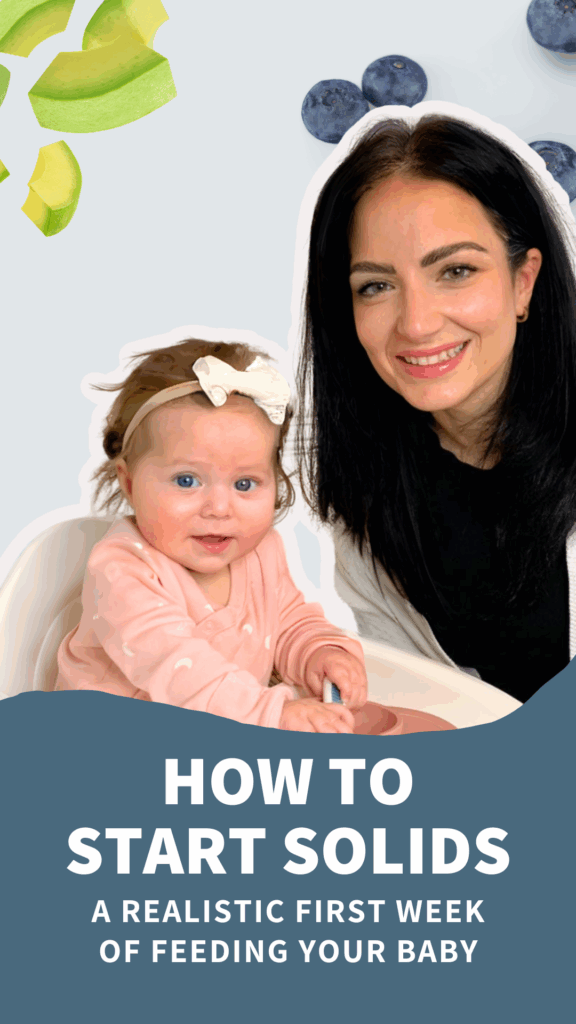
If you’re feeling stressed about starting solids with your baby, we have a solution! Our Baby Led Feeding course is the most comprehensive online feeding course out there and provides you with step-by-step guidance into this new world of serving solids and finger foods to your baby.
PLUS, you get lifetime access and a community where you can get daily support from our feeding specialists. You’ll never feel like you need to search the depths of the internet to find a trusted answer. We’re with you every step of the way!
If you’re feeling stressed about starting solids with your baby, we have a solution! Our Baby Led Feeding course is the most comprehensive online feeding course out there and provides you with step-by-step guidance into this new world of serving solids and finger foods to your baby.
PLUS, you get lifetime access and a community where you can get daily support from our feeding specialists. You’ll never feel like you need to search the depths of the internet to find a trusted answer. We’re with you every step of the way!
Pin this info to save it for later!

References
- Bakhrieva, G. (2023). Age characteristics of the digestive system. Modern Science and Research, 2(10), 975–981. Retrieved from https://inlibrary.uz/index.php/science-research/article/view/26379
- Johns Hopkins Medicine. Stool Color Guide. Retrieved from https://www.hopkinsmedicine.org/health/conditions-and-diseases/stool-color-guide
- Johns Hopkins Children’s Center. What can your child’s poop color tell you? Retrieved from https://www.hopkinsmedicine.org/johns-hopkins-childrens-center/what-we-treat/specialties/gastroenterology-hepatology-nutrition/stool-color-overview#:~:text=White%20Stools&text=If%20you%20suspect%20that%20your%20infant%20has%20white%2C%20chalky%20grey,be%20found%20on%20our%20website
- Mayo Clinic. (2024, October). What are the symptoms of infant constipation? And what’s the best way to treat it? Retrieved November 5, 2024, from: https://www.mayoclinic.org/healthy-lifestyle/infant-and-toddler-health/expert-answers/infant-constipation/faq-20058519
- Nationwide Children’s Hospital. Constipation in infants. Retrieved from https://www.nationwidechildrens.org/conditions/constipation-infant#:~:text=Sometimes%20giving%20your%20baby%20a,can%20try%20a%20glycerin%20suppository
- Seattle Children’s Hospital. (2023, October). Diarrhea (0-12 months). Retrieved from https://www.seattlechildrens.org/conditions/a-z/diarrhea-0-12-months/
- International Foundation for Gastrointestinal Disorders. Controlling intestinal gas. Retrieved from https://iffgd.org/gi-disorders/symptoms-causes/intestinal-gas/
- Province of Manitoba. (February 2016). The scoop on poop. Retrieved from https://www.gov.mb.ca/healthychild/healthybaby/kits/scoop_on_poop.pdf
- Pediatric General Surgery. Bristol Stool Form Scale. Retrieved from https://pediatricsurgery.stanford.edu/Conditions/BowelManagement/bristol-stool-form-scale.html

Jillian Smith, RD
Registered Dietitian at My Little Eater Inc., and dog-mom to River. Jillian works behind the scenes answering nutrition questions and supporting parents of babies and toddlers to feed their little ones with confidence.
She offers parents one-on-one support through 30 minute Ask Me Anything sessions, click below to schedule your call!

Jillian Smith, RD
Registered Dietitian at My Little Eater Inc., and dog-mom to River. Jillian works behind the scenes answering nutrition questions and supporting parents of babies and toddlers to feed their little ones with confidence.
She offers parents one-on-one support through 30 minute Ask Me Anything sessions, click below to schedule your call!
